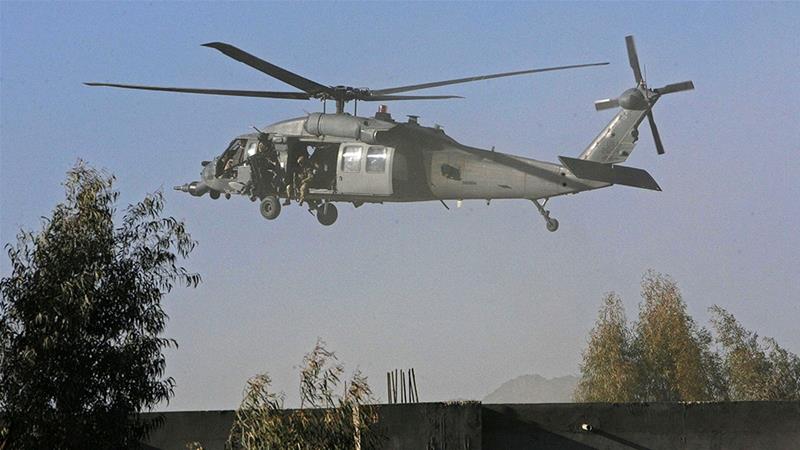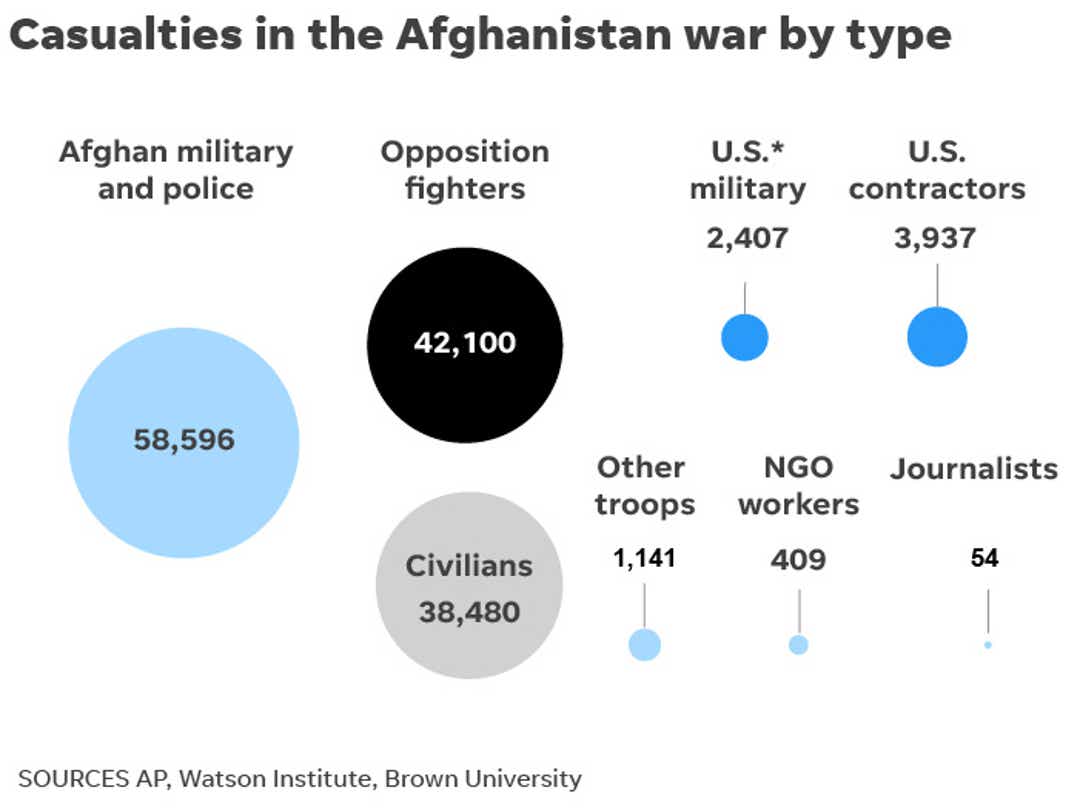On November 20th, two US servicemen died in a helicopter crash in Afghanistan. The US military provided no details on the incident, but said that the cause of the crash was being investigated, while preliminary reports indicated that it wasn’t downed by enemy fire.
The Taliban claimed responsibility for the crash, saying that they’ve shot it down over the Eastern Logar province. They further said that they’ve caused “many fatalities.”
Taliban spokesman Zabiullah Mujahid said in a statement to media that the group downed a US Chinook helicopter at around 1AM local time during fighting with the “invaders and their hirelings.”
The US military, however, dismissed the Taliban claim as false.
So far, in 2019, 19 US service members have died in Afghanistan, with 3 non-combat deaths in addition to those. The total tally in the 18-year-long US war in the country stands at approximately 2,400.
US President Donald Trump has repeatedly said that he wished to withdraw the US troops from Afghanistan.
And in October 2019, General Scott Miller, the head of US and NATO forces in Afghanistan said that the US had “quietly” reduced the number of troops in the country over the last year by approximately 2,000.
“We’ve reduced our authorized strength by 2,000 here, so there’s a constant look as a military commander to optimize the force here,” Miller said. “I am confident we have the right capabilities.”
Furthermore, despite Trump’s claims he has not given an order for a withdraw from the country. Not that such a command is an indicator for anything at all, since he did order a full withdrawal from Syria in December 2018 and there’s been little to show as a result.
Trump had previously said that he was going to reduce the number of troops in Afghanistan to 8,600.
“We’re going down to 8,600 and then we make a determination from there as to what happens … we’re bringing it down,” Trump said in August.
At the same time, the 2,000 reduction isn’t part of a broader withdrawal plan, but rather a plan to streamline the US presence in Afghanistan.
It is not due to some sort of peace deal with the Taliban, since there’s been little movement in that regard after Trump said he cancelled secret meetings with Taliban leaders at Camp David back in September.
Asked if the US would reduce troops to 8,600 without a deal with the Taliban, Esper said, “I don’t want to get ahead of the diplomats on that front. I’m just saying I know what we can go down to, and feel confident based on reports I’ve gotten from the commander on the ground.”
Esper further said that the US’ “Afghanistan allies” can be sure that they won’t be abandoned like the Syrian Democratic Forces (SDF) in Syria, since the situations were quite different.
“All of these things, I think, should reassure our Afghan allies and others that they should not misinterpret our actions in the recent week or so with regard to Syria and contrast that with Afghanistan,” Esper said.
Furthermore, the November 1st report by the US Congress showed that the negotiations between the Taliban and the US have all but crashed and burned. With initial deals suggesting that upwards of 5,000 troops would be withdrawn, but that was prior to the September pause, announced by Trump.
At the same time, despite Trump’s claims that he wants a withdrawal and a scaling down, in 2019, there’s been a record number of missiles and bombs dropped in the 18-year-long war.
From January 1st 2019 through October 2019, US-led forces have used 6,208 missiles and bombs in Afghanistan. That compares with 5,982 for the same period in 2018, which saw the most airstrikes of any year since 2001.
The increase in bombing stems from the need to support the operations of Afghan security forces against the Taliban and other extremist groups and to defend against their attacks on Afghan society, said Army Maj. Beth Riordan, a spokeswoman for U.S. Central Command, which oversees military operations in Afghanistan.
“All of our operations in Afghanistan support our mission to assist the Afghan government and its security forces’ effort to maintain security and stability in the country and prevent the country from becoming a safe haven for terrorism,” Riordan said.
The infographic below presents the casualties in the war since 2001, and shows how many civilians had died. At the same time, the US maintains that if civilians were killed, it was because either the Taliban were targeting them, or were using them for supplies or otherwise. Regardless, the Taliban were to blame for all civilian casualties.
MORE ON THE TOPIC:






Good.
I invite you to see their families. Is it wrong for them to be in Afghanistan? Yes. Is it right to exult in the loss of human life? No.
6k US soldier/contractors deaths so probably about 60-120k seriously wounded. That’s a significant price for the US that will be there for 50 more years, every year.
hard to negotiate an honourable peace when you’ve lost the war, which is the case here. the talibans 10 the unhinged states of A 0 or zilch or nada or nothing. but the ever dumb morons from washington dc need to come home with a draw, at least on the paper. but the talibans won’t give them the pleasure and while the unhinged states of A dither, more devastation more death and more humanitarian misery will result. shame on washington – the afghan war is lost lost lost and then lost and the cost for this loss loss loss and loss is an astounding 10 trillions highly deflationary dollars.
What are you talking about not for one second did the US military want to win this war this shit show has gone exactly to plan
Bad